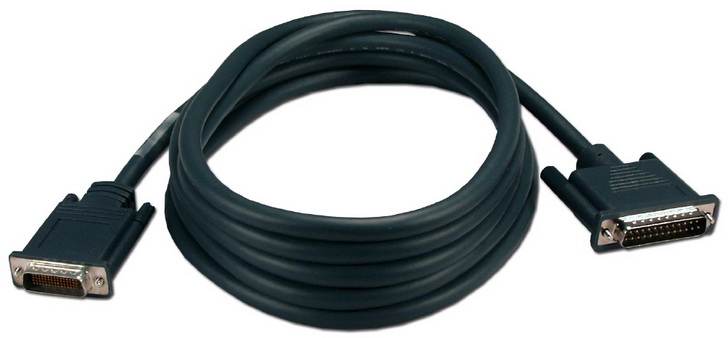In the dynamic landscape of networking, the role of Cisco serial cables stands paramount. As authorities in the field, our goal is to furnish you with a comprehensive guide that not only unravels the technical intricacies but also sheds light on the practical applications and advantages of these cables in the digital era.
Decoding Cisco Serial Cables: An In-Depth Examination
- Introduction to Cisco Serial Cables
At the heart of network connectivity, Cisco serial cables emerge as indispensable components. Designed for linking routers and other network equipment, these cables facilitate seamless data transfer, forming the backbone of efficient communication.

DB60 to DCE DB25 RS232 Serial Cisco Router Cable
- Diverse Array of Cisco Serial Cables
Embark on a journey through the diverse spectrum of Cisco serial cables, each tailored to specific networking scenarios. From the standard RS-232 cables to the specialized Smart Serial and WIC-2T models, discerning the unique attributes of each type is crucial for optimal network configuration.
- Technical Specifications Unveiled
Delve into the technical intricacies that define Cisco serial cables. From connector types and pin configurations to baud rates and transmission speeds, a meticulous understanding of these specifications is vital for successful implementation and troubleshooting.
Real-World Applications: Unleashing the Potential of Cisco Serial Cables
- Router Configuration and Console Access
Unlock the fundamental role of Cisco serial cables in router configuration and console access. Grasp how these cables empower network administrators to establish direct connections to network devices, streamlining the configuration process.
- Versatile Network Device Connectivity
Explore the versatility of Cisco serial cables in connecting various network devices. Whether forging links between routers, switches, or firewalls, these cables play a pivotal role in inter-device communication, contributing to a robust and efficient network infrastructure.
- Firmware and Software Upgrades Simplified
Navigate the practicalities of using Cisco serial cables for firmware and software upgrades. Gain insights into how these cables facilitate the seamless transfer of crucial updates, ensuring that network devices operate with the latest features and security patches.
Cisco Serial Cable Connection Guide
Advantages Amplified: Elevating Network Efficiency with Cisco Serial Cables
- Reliability and Stability Redefined
Dive into the unparalleled reliability and stability offered by Cisco serial cables. In critical networking scenarios, these cables prove to be dependable, ensuring consistent and secure data transfer, ultimately minimizing the risk of network disruptions.
- Compatibility with Legacy Equipment
Highlighting a key advantage, Cisco serial cables maintain compatibility with legacy equipment. This backward compatibility proves invaluable where older devices coexist with newer technology, allowing for a seamless integration process.
- Cost-Effectiveness in Network Setup
Scrutinize the cost-effectiveness of deploying Cisco serial cables in network setups. Their versatility and longevity contribute to a cost-efficient networking solution, positioning them as the preferred choice for organizations seeking to optimize their infrastructure investments.
Frequently Asked Questions (FAQ)
Q1: Why should I consider using Cisco serial cables in my network setup?
A1: Cisco serial cables play a crucial role in network connectivity, facilitating seamless data transfer between devices. They are essential for tasks such as router configuration, console access, and connecting various network devices.
Q2: What types of Cisco serial cables are available, and how do they differ?
A2: Cisco offers a diverse range of serial cables, including standard RS-232, Smart Serial, and WIC-2T models. Each type is designed for specific networking scenarios, and understanding their unique attributes is essential for optimal network configuration.
Q3: Can I use Cisco serial cables for router configuration?
A3: Absolutely. Cisco serial cables are fundamental for router configuration and console access. They enable network administrators to establish direct connections to routers, streamlining the configuration process.
Q4: How versatile are Cisco serial cables in terms of device connectivity?
A4: Cisco serial cables are highly versatile and can connect various network devices such as routers, switches, and firewalls. Their role in inter-device communication contributes to building a robust and efficient network infrastructure.
Q5: Are Cisco serial cables suitable for firmware and software upgrades?
A5: Yes, Cisco serial cables are practical for firmware and software upgrades. They facilitate the seamless transfer of crucial updates, ensuring that network devices operate with the latest features and security patches.
Q6: What advantages do Cisco serial cables offer in terms of network efficiency?
A6: Cisco serial cables provide unparalleled reliability and stability in critical networking scenarios. They maintain compatibility with legacy equipment, offering a cost-effective solution for optimizing network infrastructure investments.
Q7: How do Cisco serial cables contribute to the cost-effectiveness of a network setup?
A7: Cisco serial cables contribute to cost-effectiveness by offering versatility and longevity. Their backward compatibility with legacy equipment ensures a seamless integration process, making them a preferred choice for organizations seeking optimal infrastructure investments.
Conclusion: Empowering Your Network with Cisco Serial Cables
In conclusion, this comprehensive guide is designed to empower you with an in-depth understanding of Cisco serial cables. From technical specifications to practical applications and advantages, these cables emerge as indispensable tools for network administrators and engineers alike.